Elevating Efficiency with Prompting Techniques
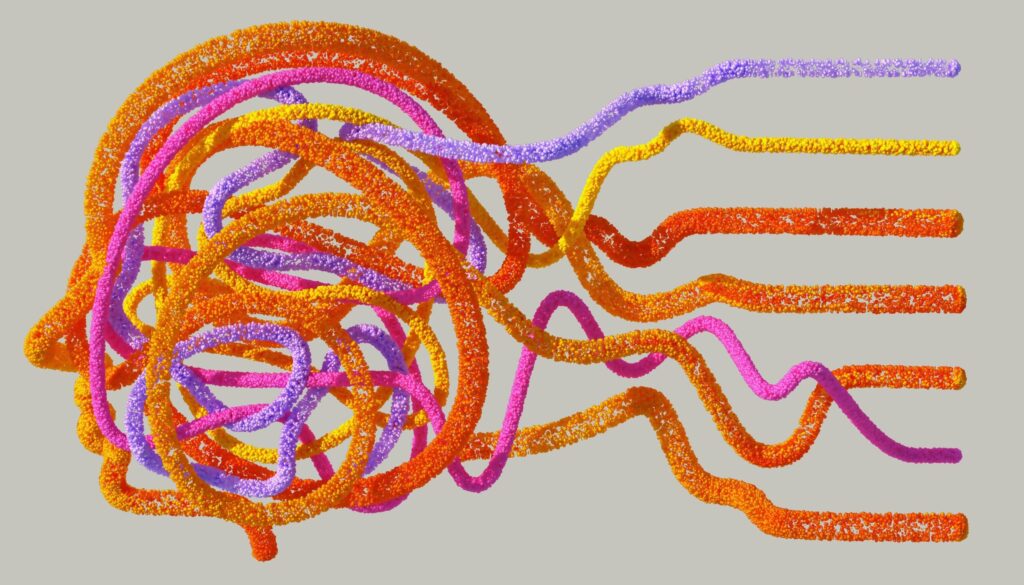
In recent years, problem-solving techniques have undergone a fundamental transformation due to the increasing adoption of large language models (LLMs). Earlier, to solve any tasks with computers, programs had to be created. These programs were composed of carefully constructed commands written in different programming languages. But since LLMs were developed, completing these kinds of tasks has just required textual prompts.
Because of their text-to-text structure, LLMs are remarkably capable of handling a wide range of tasks with a single model. Initially, models such as GPT-2 and GPT-3 were used in zero and few-shot learning demos to highlight this capability. But LLMs become even more interesting when customized to match human preferences and commands, opening the door to the creation of well-known generative applications like chat-based search experiences, information-seeking dialogue agents, and coding assistants.
LLMs’ adaptability and usefulness have driven them to recognition in both scientific and popular cultures.
Prompt engineering is a related field that has emerged at the same time as this rise in popularity. A more sophisticated form of engineering known as prompt engineering is the generation of input requests for large language models (LLMs) that direct them to produce desired outputs.
It comprises improving prompts’ responsiveness to user inputs through iterative tuning. When simple prompts don’t produce the desired results, this iterative procedure is especially helpful.
Let’s look at some common prompting tactics in depth.
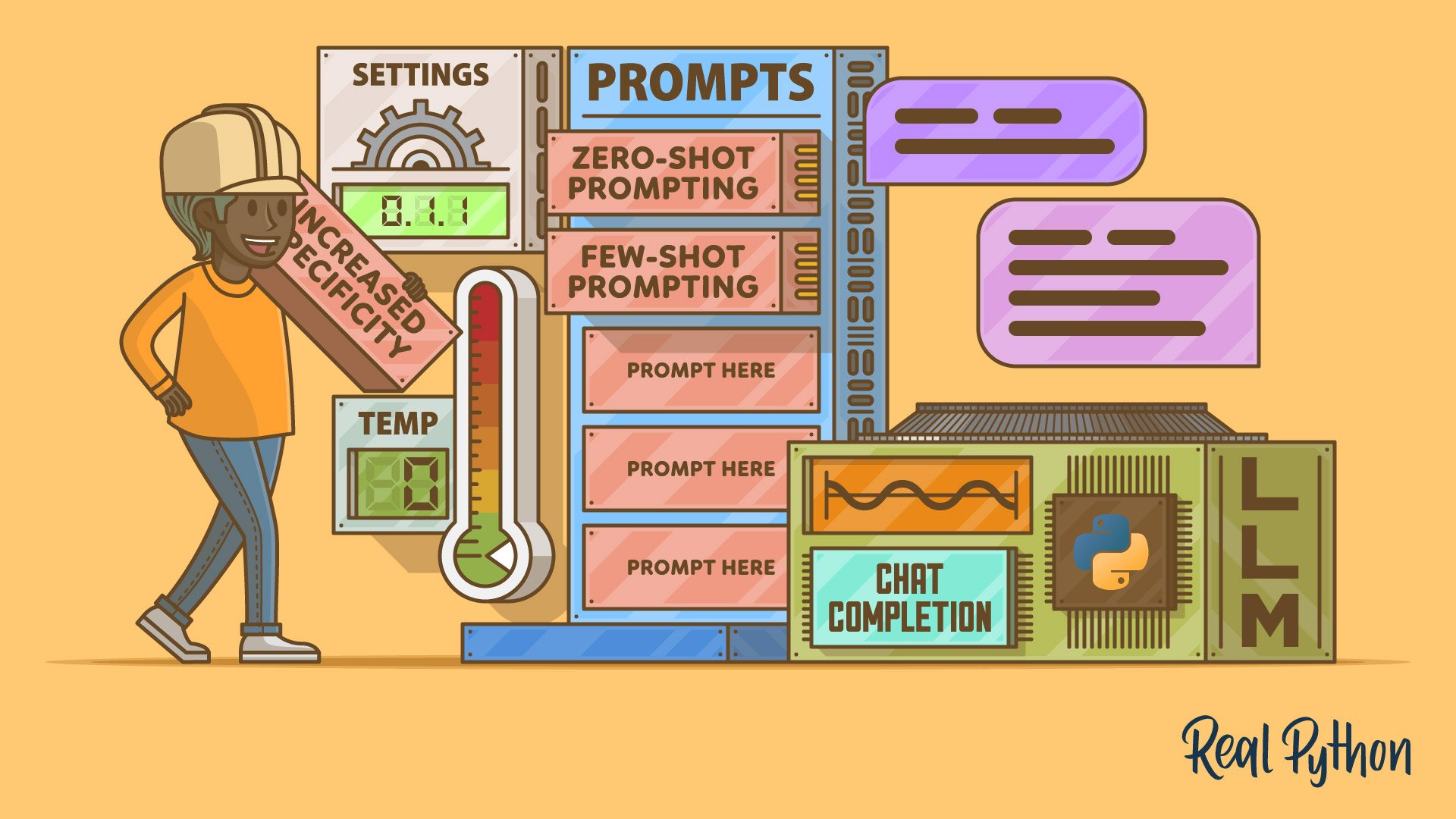
Types of Prompting Techniques
-
Zero-Shot Prompting:
Zero-shot prompting involves presenting tasks to a model without providing any task-specific examples. The model is expected to generate a response based solely on the given prompt and its pre-existing knowledge.
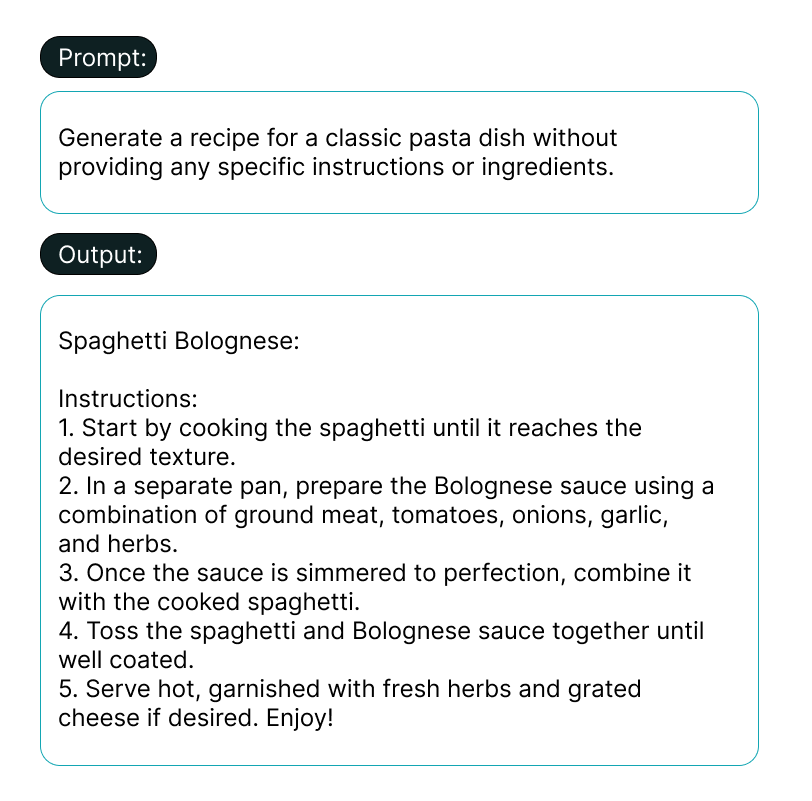
In this example, the model generates a recipe for a classic Italian pasta dish based solely on the given prompt, without any specific instructions or ingredients provided.
When zero-shot doesn’t work, it’s recommended to provide demonstrations or examples in the prompt which leads us to one-shot and few-shot prompting.
-
One-Shot Prompting:
One-shot prompting involves showing the model one task-specific example before presenting the actual prompt. This example serves as a reference for the model, guiding its understanding of the task and expected response. For instance, consider the below example:
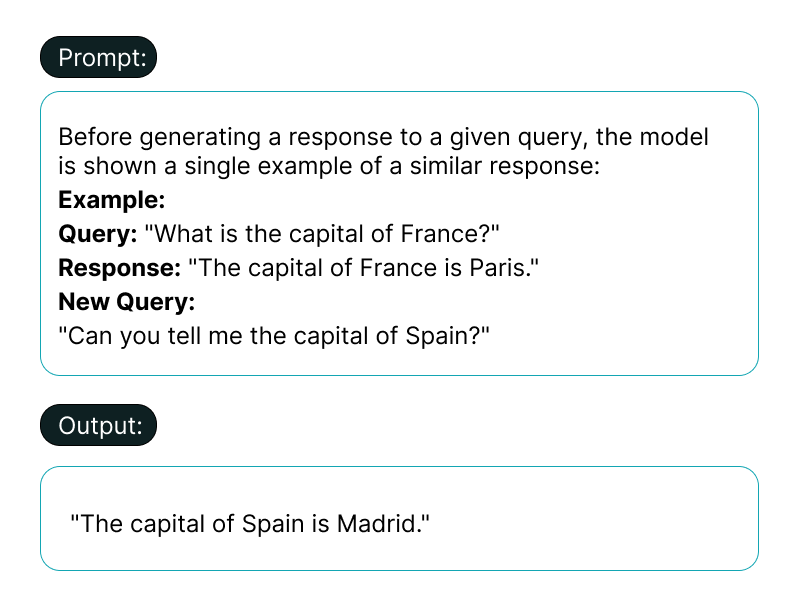
In this example, the model is shown as one example of a response to a query about a country’s capital before being asked to respond to a new query. It uses the example to understand the task and generate a response for the new query accordingly.
-
Few-Shot Prompting:
Few-shot prompting involves providing the model with a few task-specific examples to enhance its performance on a particular task. The model learns from these examples to generalize its understanding and improve its accuracy on similar tasks. For instance, consider a scenario where the model is trained to classify customer reviews as positive or negative based on a few labelled examples:
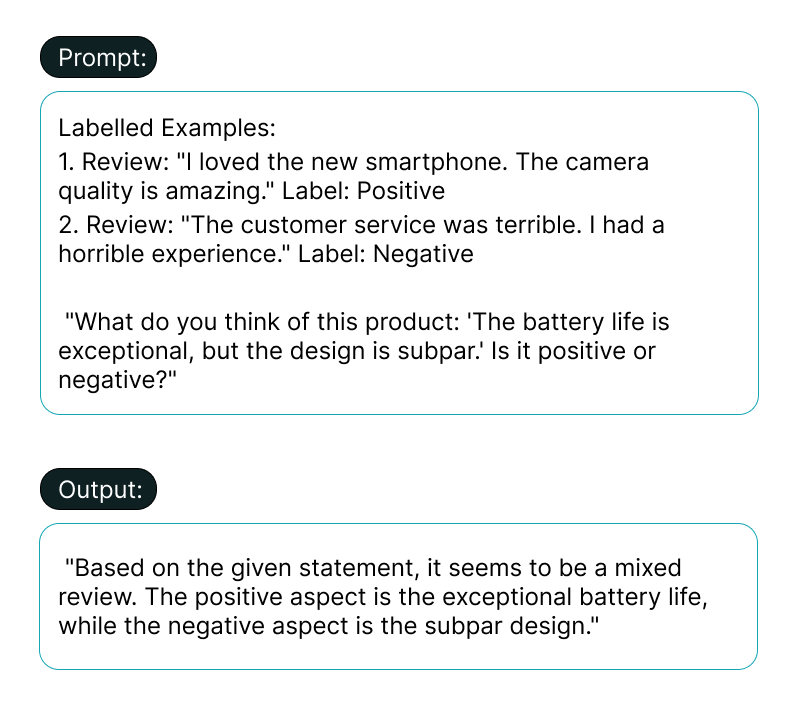
Here, the model accurately identifies the mixed sentiment of the review by leveraging the few-shot examples provided during training.
-
Multi-Shot Prompting:
Multi-shot prompting expands on the concept of one-shot prompting by providing the model with multiple task-specific examples to guide its output. These examples offer a broader understanding of the task and allow the model to produce more accurate and comprehensive responses. For example, consider a translation task where the model is provided with multiple examples of English-to-French translations:
Examples:
- English to French Translation: “Hello, how are you?” Output: “Bonjour, comment ça va?”
- English to French Translation: “Thank you, I am well.” Output: “Merci, je vais bien.”
By analyzing multiple examples, the model can generate translations that capture the nuances of the language more effectively.
-
Chain-of-Thought Prompting:
Chain-of-thought prompting involves breaking down the input-output process into a series of coherent reasoning steps. This technique aids complex tasks like common sense reasoning and arithmetic by providing structured responses. For instance, consider a math word problem where the model follows a series of intermediate reasoning steps to arrive at the final answer:
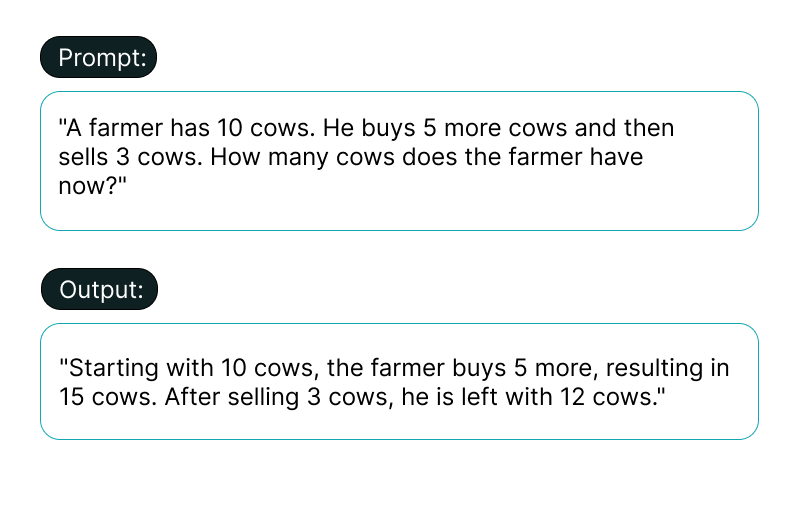
Here, the model generates a chain of thought to solve the problem step-by-step, leading to the final answer.
The integration of prompt engineering revolutionizes various aspects of customer interaction and service across industries:
How can organizations leverage prompt techniques?
-
Conversational AI:
The rise of chatbots and virtual assistants emphasizes the need for seamless, contextual conversations. Prompt engineering empowers brands to create AI companions that adapt to user tone, understand intent, and provide personalized responses. From recommending recipes to scheduling appointments, AI companions offer tailored assistance with a touch of wit.
-
Recommender Systems:
Prompt-engineered LLMs analyze individual user data and preferences to deliver personalized product recommendations. These systems can offer intuitive and engaging shopping experiences, helping customers discover unexpected favourites based on their evolving tastes.
-
Customer Service Applications:
Customer service transforms with prompt-engineered AI capable of analyzing complaints, suggesting solutions, and seamlessly escalating issues. AI-driven customer service centres streamline routine tasks, allowing human agents to focus on complex cases and foster deeper customer relationships.

-
Marketing:
Companies are expanding generative AI efforts in marketing, leveraging prompt engineering for content generation and SEO optimization. Fine-tuning prompts to fit specific niches enables the creation of tailored marketing materials, driving engagement and enhancing brand visibility.
How prompt techniques can be used across industries?
-
Healthcare:
Prompting techniques support medical chatbots in providing preliminary diagnoses, analyzing medical imaging data for improved diagnostics, and offering personalized mental health support.
-
Finance:
In finance, prompting is used for automating financial data analysis, enhancing fraud detection and prevention, and streamlining customer service through intelligent chatbots.
-
Manufacturing:
Prompting aids in optimizing production processes, enhancing supply chain management with predictive analytics, and improving product quality control through automated systems.
-
Education:
In the education sector, prompting facilitates personalized learning experiences, collaborative learning, and the development of smart tutoring systems for improved academic outcomes.
Sankey Solutions leverages prompt engineering to enhance efficiency and effectiveness in various aspects of its operations.
Sankey employs prompt engineering to enrich its internal knowledge base. Developers use prompt-engineered AI to curate and refine a comprehensive repository of best practices and troubleshooting guides. By providing developers with prompt-based access to this knowledge base, Sankey ensures quick and accurate resolution of technical queries and challenges.
Within its internal project management processes, Sankey implements prompting techniques to facilitate communication and collaboration among development teams. Prompts are utilized to streamline task assignments, progress tracking, and issue resolution. By incorporating prompt engineering into project management tools and workflows, Sankey enhances team productivity and project efficiency.
Sankey enhances its capacity to provide forefront tech solutions that satisfy the diverse requirements of its clients and support business growth by adopting rapid development.